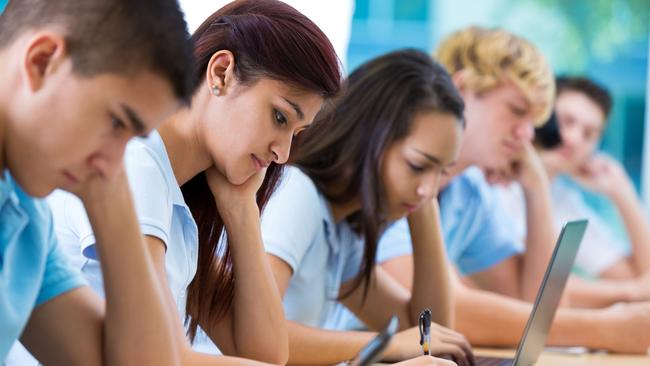Govt to track school leavers to improve education outcomes, updated strategic plan says
A new strategy to drag SA’s education system up to a world-class level has been drawn up, with plans to keep tabs on school-leavers and modernise staff.
Education
Don't miss out on the headlines from Education. Followed categories will be added to My News.
School leavers will be tracked by the Education Department to see whether they find a job, go on to further study or face the dole queue.
The move, part of an updated strategic plan by the department, aims to help gauge whether schools are delivering the best outcomes.
Recruitment and selection of teachers and principals also will be modernised as the department strives to lift South Australia’s education system to world-class levels.
Releasing the update three years after the plan was first announced, Education Department chief executive Rick Persse said SA did not know of any other state tracking school leavers.
“It has been a bit hit and miss,” he said.
“In the past, we have had SA Certificate of Education completion rates – so the raw total number of kids in year 8 and the raw total number of kids getting their SACE.
“We have got infinitely better at being able to track individual students to SACE.
“But post-school we have work to do.

“Now, kids leave school and go off to uni, an apprenticeship, work or a gap year – and the next time we might see you is at the 10-year reunion.”
If students drop out of uni or trade training, no information goes back to the department so it could assess whether anything could have been done better at school.
The department wants to avoid young people falling into the vortex called NEET, or “not in education, employment or training”.
“If they’re caught in that for a year or two, the odds of getting back into education or employment fall away at a worrying rate,” Mr Persse said.
It was also important for the state economy to know whether the right numbers of students were being prepared for the growth industries and traditional sectors.
The process of how to track students will be designed over the next couple of years, with the strategic plan targeting its implementation in 2023 or 2024.
Mr Persse said the recruitment of teachers to fill extra high school positions with year 7 moving to the secondary level next year had sparked a broader rethink.
Existing practice had been entrenched over decades but consultants used in the year 7 campaign had moved away from lengthy written CVs to more flexible assessments such as using digital applications.
A particular focus would be on regional and remote schools to see what extra supports were needed to break the long-running barriers to finding well qualified staff.
The updated strategic plan has been sent to schools, governing councils and stakeholders to share progress made so far and plot course for the next few years.
The plan is underpinned by every school being measured against a set of benchmarks and plotted against five scales – poor, fair, good, great and excellent – under a system designed with assistance of global consultancy McKinsey.
When the scales were set up in 2017, SA as a whole was just inside the good band but had now moved up to the middle of good band.
Scores were initially based on NAPLAN and SACE results and the trajectory of improvement but have been broadened to also include results of phonics, progress achievement tests and staff survey data.
“When we say we have an ambition to be world-class, it needs to be more than just rhetoric, Mr Persse said.
“We’re being quite scientific about it.”
A dashboard of results on each school is accessible to teachers but not to parents or the wider public on privacy grounds.
“There’s detail there at the individual student level, it’s quite granular,” Mr Persse said.



